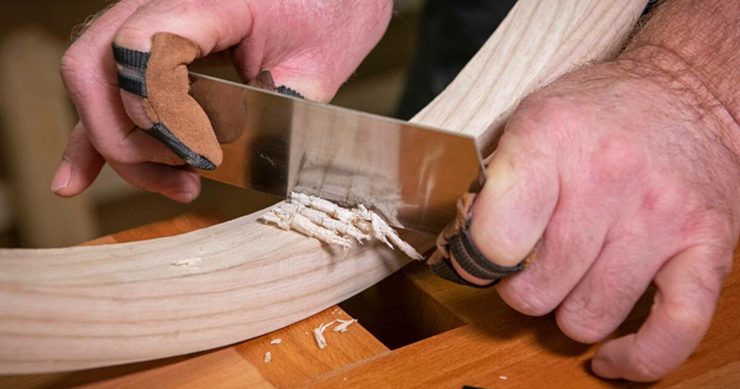Cabinet scrapers are an essential tool for woodworkers due to their versatility, affordability, and ability to perform tasks that more expensive tools struggle with. Unlike planes and chisels, which require a polished, acute edge free of burr, scrapers are designed to have a tiny, well-defined burr that is used to cut wood. Cabinet scrapers come in various shapes and are often sold in sets of three. The edges of these scrapers can be used on flat surfaces, while the ends can smooth concave and convex surfaces.
Sharpening a cabinet scraper involves filing and honing the scraper’s edge square and smooth, then using a burnisher to distort the steel into a tiny burr that curls over the face of the scraper. It’s important to avoid over-burnishing, which can result in a ragged edge rather than a continuous sharp one. Cabinet scrapers can be used for a variety of tasks such as removing depressions or torn-out grain, flattening misaligned joints, cleaning off dried glue, or removing old finishes.
Key Takeaways:
- Cabinet scrapers are versatile and cost-effective tools that can perform tasks that more expensive tools struggle with, making them an essential item in every toolbox.
- The effectiveness of a cabinet scraper lies in its well-defined burr that does the cutting, and the art of raising this burr along the edge of the scraper is key to its usage.
- Sharpening a cabinet scraper involves filing and honing the scraper’s edge square and smooth, then using a burnisher to create a tiny burr that curls over the face of the scraper, a process that requires practice.
“One of the most useful, versatile and inexpensive items, which should be in every toolbox, is the ordinary cabinet scraper. Few are aware of how to use this workhorse correctly, and even more do not know how to sharpen it. I would like to share how to make this ancient tool perform magic in situations where much more expensive tools struggle.”
More details: here






